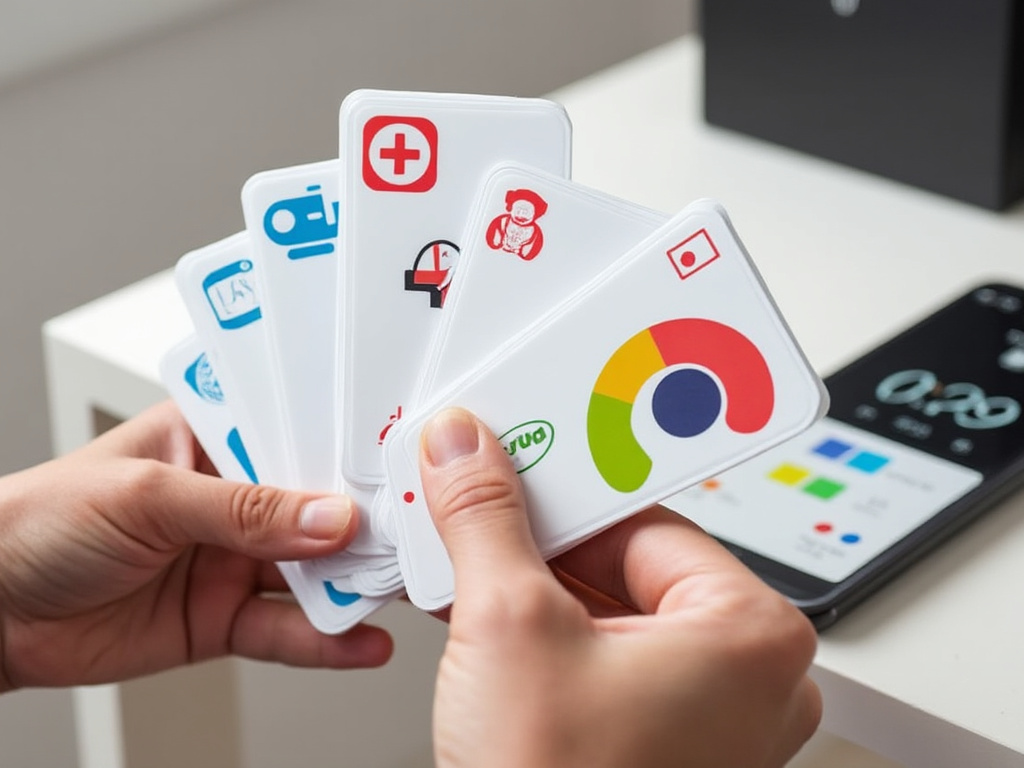Flashcards have long been a staple in language learning, providing a simple yet effective way to reinforce vocabulary, grammar, and even pronunciation. With today’s technology, flashcards have evolved, enabling language learners to create digital flashcards, play interactive games, and access their cards anytime on mobile devices. Here, we present seven engaging web resources and tools to bring flashcards to life, making vocabulary practice fun, dynamic, and accessible for English learners.
For more ideas on integrating technology to support English language learners, check out our free Friday webinars and webinar recording on using flashcards to create exciting learning activities.
1. Quizlet – Customizable and Fun for All Levels
Why It Works: Quizlet is a versatile tool that allows students to create, remix, and study digital flashcards with words, definitions, and images. Its game-based learning modes, like Match and Gravity, transform vocabulary practice into an engaging experience.
How to Use in Class: Encourage students to create their own flashcard sets or remix existing ones, adding personalized definitions and example sentences. Use Quizlet Live to create a team-based learning game where students race to match terms, reinforcing vocabulary while encouraging collaboration.
Explore Quizlet: Quizlet
2. GoConqr – A Comprehensive Learning Platform
Why It Works: GoConqr goes beyond flashcards, offering tools to create mind maps, notes, and quizzes, which can support a variety of learning styles. This flexibility makes it ideal for both individual and group study sessions.
How to Use in Class: Use GoConqr to help students map out vocabulary themes or grammar rules visually. Ask them to create interconnected flashcards with mind maps to link new words to similar terms, concepts, or example sentences. It’s perfect for visual and spatial learners who benefit from seeing connections.
Explore GoConqr: GoConqr
3. AR Flashcards – Augmented Reality for Young Learners
Why It Works: AR Flashcards bring vocabulary to life through augmented reality. By holding an iPhone or iPad over printed flashcards, students can see animated characters pop up on the screen, making language learning interactive and fun.
How to Use in Class: Young learners will enjoy using AR Flashcards as a hands-on, interactive activity. Choose flashcards based on animals, colors, or numbers and have students pronounce words as they see the characters appear. It’s a memorable way to practice vocabulary and build speaking confidence.
Explore AR Flashcards: AR Flashcards
4. Sight Words – Perfect for Phonics and Early Reading
Why It Works: Sight Words is a robust resource for teaching young learners to read and recognize phonics. The site includes flashcards and various activities that make sight word recognition fun and engaging.
How to Use in Class: Use Sight Words flashcards during reading sessions to reinforce vocabulary and phonics. Have students say each word aloud and act it out or use it in a sentence to improve comprehension. It’s especially effective for building reading fluency among young or beginner English learners.
Explore Sight Words: Sight Words
5. Memrise – Gamified Learning for Language Enthusiasts
Why It Works: Memrise combines flashcards with fun quizzes and interactive games. Its content covers various languages, including English, with a focus on vocabulary, phrases, and cultural insights that enhance comprehension.
How to Use in Class: Have students use Memrise as supplementary homework. They can select language courses based on their interests and levels, practicing vocabulary in a gamified setting. Reward students for completing “streaks” on the platform, building motivation and daily practice habits.
Explore Memrise: Memrise
6. Cram – Create and Share Custom Flashcards
Why It Works: Cram is an online community where students and teachers can create and share flashcards. It provides a range of study modes, including Memorize and Test, and even supports offline access for continuous learning.
How to Use in Class: Encourage students to work in pairs or groups to create flashcard sets on Cram. Each group can focus on a specific theme, such as food vocabulary or common idioms, and present their flashcards to the class. Sharing custom flashcards builds a collaborative learning environment.
Explore Cram: Cram
7. Boggles World – Printable Flashcards for Every Topic
Why It Works: Boggles World provides an extensive collection of printable flashcards that cover a wide range of vocabulary topics. Teachers can easily download and print flashcards for in-class activities, making it an excellent option for classrooms without digital access.
How to Use in Class: Use Boggles World’s printable flashcards for hands-on vocabulary games, such as matching or memory games. Organize small groups where students can practice vocabulary in pairs, using the flashcards to reinforce their speaking and listening skills.
Explore Boggles World: Boggles World
More Fun Flashcard Tools
Here are a few other fun flashcard tools to consider:
- Flashcard Monkey – Creative, cartoon-style flashcards that are perfect for visual learners and children. (Flashcard Monkey)
- Flashcard Stash – An online flashcard creator that allows students to define words and organize them into “stashes.” (Flashcard Stash)
- Math Cards – An Android app designed to help students learn math concepts through flashcard games, ideal for English-speaking math practice.
Fun Facts About Flashcards for Language Learning
- Flashcards’ Origin: Flashcards date back to the 19th century and were originally used as a teaching tool for young learners, much as they are today!
- Quizlet’s Popularity: Quizlet has over 50 million active users worldwide, making it one of the most popular flashcard apps.
- Flashcards Boost Memory: Studies show that repeated exposure to words on flashcards enhances retention, making flashcards a proven method for vocabulary building.
Final Thoughts
Incorporating digital flashcards into your TESOL classroom adds a fun and flexible element to language learning. With these resources, students can enjoy interactive learning anytime, building vocabulary, grammar, and pronunciation skills. Encourage your learners to experiment with these tools and find the ones that fit their needs best. Flashcards, whether digital or physical, are a simple yet powerful way to support language acquisition, making language learning both accessible and enjoyable.



